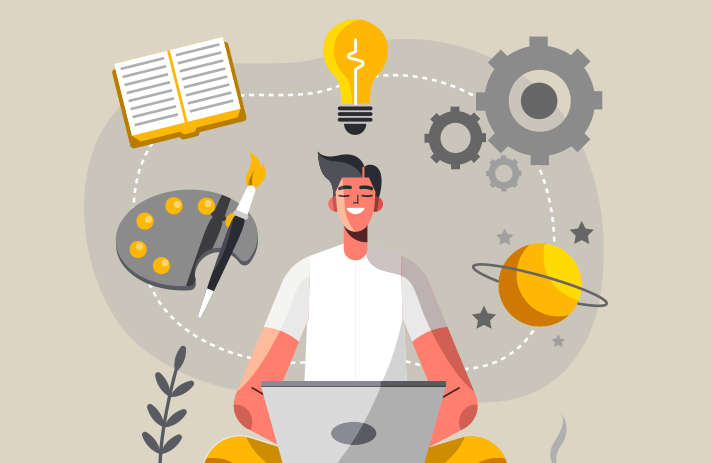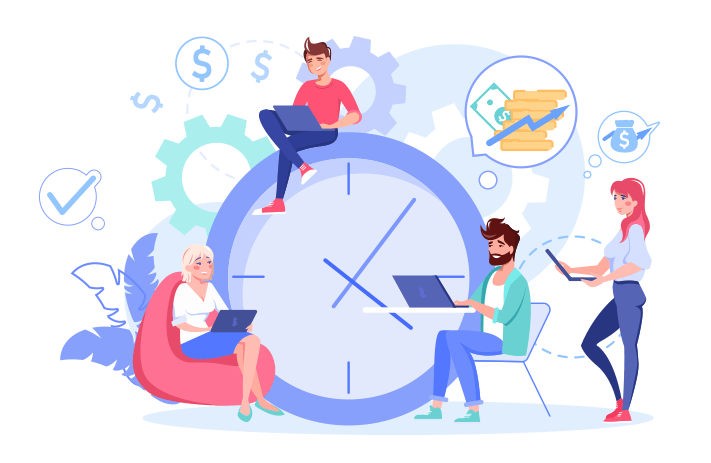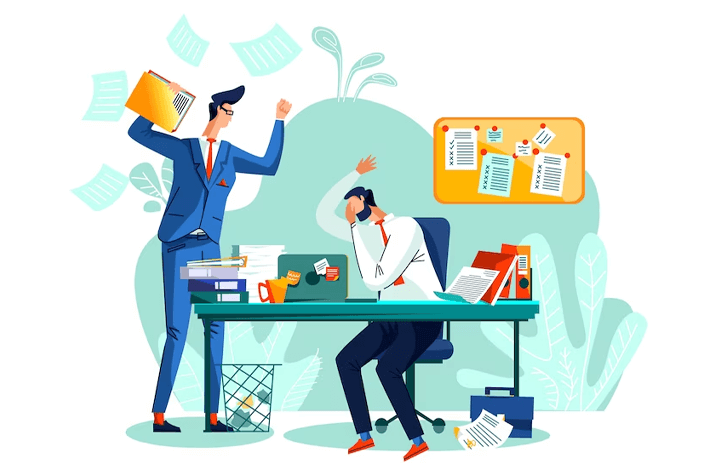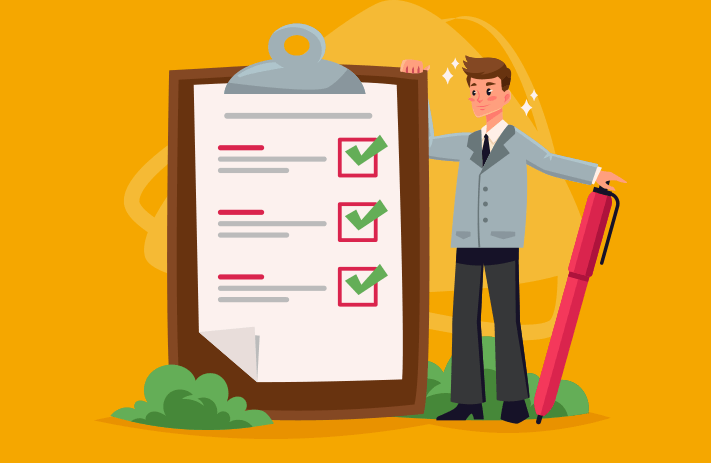
Click the button to start reading
How to Practice Mindfulness Throughout Your Workday
Mindfulness is a very elusive concept—some people say that practicing it’s more complicated than it appears, more experienced meditators say it’s much easier than people think. The beauty of investing time in mindfulness exercises is that you’ll benefit significantly from them, even if it’s your first time meditating.
People get really worked up during office hours. We have to interact and often disagree with our colleagues and customers—for many, anxiety is just part of the job.
However, there are also things outside our jobs that contribute to our mindlessness—you know, stuff like social media, a generally fast-paced life, and many other things. As a result, this makes us extremely unproductive at work, causing more anxiety and distress.
In today’s blog post, we’ll take a quick look at a few simple and very effective mindfulness exercises to help you stay happy and productive at work.
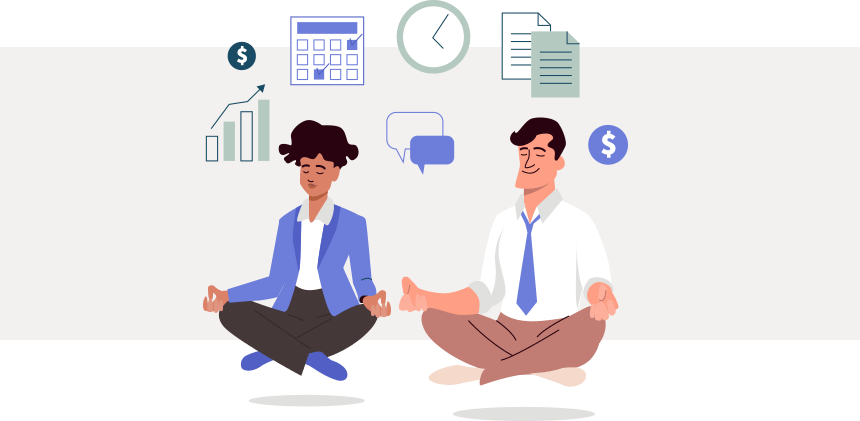
Alright, what’s mindfulness?
Mindfulness has been a buzzword for the last ten years or so. It’s a practice that goes back thousands of years, originating from ancient Eastern and Buddhist philosophy. The modern mindfulness practice is more straightforward and goal-oriented, allowing practitioners to reap its benefits without having to learn the intricacies of Buddhism.
A very simple definition of mindfulness is: “Intentionally directing attention to present moment experiences with an attitude of curiosity and acceptance.” So it’s pretty much being right here and right now, acknowledging how you feel and what you’re thinking about, but in a non-judgmental way. A big part of the modern mindfulness practice revolves around breathing exercises, guided imagery, and other practices that will help you induce a sense of calm in the mind and body.
How can that help you at work?
- It will significantly improve your focus. Learning to concentrate on one thing at a time is an awesome skill that will help you become more efficient at work.
- I will enhance your creativity. Mindfulness allows people to enter a creative frame of mind by removing judgment. This will enable you to explore innovative solutions that you would have otherwise scrapped.
- It will help you reduce stress. Mindfulness allows people to see that the things that made them anxious or upset are just…things. That is not to say that mindfulness promotes indifference. Instead, it calls for doing the right things at the right time while also understanding how unnecessary our suffering is most of the time. So it’s not about eliminating thought or emptying the mind—it’s all about clarity and self-control.
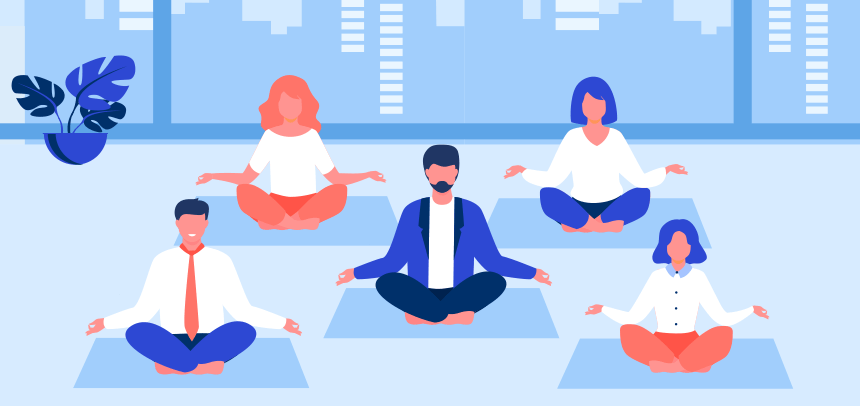
So how do I practice mindfulness at work?
Before we dive into the specifics, let’s take a second to explore what it actually means to be mindful. To many, this is a confusing concept due to its overwhelming simplicity—we typically expect something that has so many benefits to be extremely convoluted. Well, it’s not. For beginners, at least.
Yes, meditation and mindfulness are incredibly broad practices, and many people dedicate their entire lives to understanding them. However, when it comes to applying mindfulness to concentrate, relax, and become consciously present, you don’t really need a degree to do that. The best part is the more you practice it, the greater the benefits you’ll reap. Try your best not to be intimidated by any of these exercises. You’ll do just fine. When in doubt, just go with the flow.
Okay, now, let’s start with something very simple. The first exercise is pretty much unstructured, but it does demand some diligence to do it right.
1. Effortlessly present
Often, when we’re really focused on work, we tend to lose sight of how we feel and the environment around us. This isn’t ideal since this allows stress to slowly creep into our lives.
Start off by being mindful of what you’re doing. Pay close attention to what you’re doing and how you’re feeling, but do so in an effortless manner. Whenever you feel that your mind has wandered elsewhere, gently bring it back to the object of your attention.
I’ve mentioned above that mindfulness is like a muscle. At the very beginning, you won’t even notice that your mind has gone astray. In time, you’ll be able to identify mindlessness much quicker and bring your attention to where it’s supposed to be.
2. One thing at a time
Multitasking is a scam. Whatever you do—please don’t fall for it. Nobody really knows when or how this harmful practice earned its popularity, but it’s been nothing but a letdown for many, and if anyone may think otherwise, chances are that they’re mistaken.
This isn’t a personal grudge I have with doing multiple things at the same time—there’s plenty of research that refutes any semblance of an argument for its usefulness. This isn’t a mindfulness exercise per se. Instead, it’s a precursor to a more present and less stressful workday.
Whenever you catch yourself alternating tasks to save time, bring yourself back to doing just one thing at a time. Not only will this be a more efficient decision, in the long run, you’ll also incur less damage to your brain in the process. Yes, multitasking does literally affect parts of your frontal lobe and might decrease your IQ for a while. ¯\_(ツ)_/¯

3. Use distractions to your advantage
We’re used to slipping into mindlessness since we haven’t learned to do otherwise. But what if we used the distractions that steer our minds elsewhere to our benefit?
Think of the things that usually distract you. For many, it’s the constant notifications that make your phone vibrate. If you choose to have your phone on your desk and not have it entirely muted, consider using these notifications as a call to mindfulness.
Whenever you notice that your phone is vibrating, instead of instantly picking it up, pause for a second and take a few moments to be mindful.
4. Breathe in and out
One of the fundamental meditation techniques that most practitioners start with is Anapana, which roughly translates as “inhalation and exhalation”. The main idea behind this practice is to concentrate on your breath and the qualities of the air that you breathe. This meditation is normally used as a stepping stone for other exercises since its simplicity and one-pointedness helps you sharpen your focus.
Start by inhaling and exhaling slowly through your nose. While you’re at it, focus on the air that you breathe. Then, concentrate on the sensations in your nostrils as the air moves in and out. Notice how it’s cold when you breathe in and warm as you breathe out.
After a few minutes, you can shift your attention towards your chest and stomach and how your body behaves as you breathe.
At a certain point, you may realize that your mind has wandered off—that’s absolutely fine. Remember, meditation and mindfulness are not practices where you have to “perform.” The critical part here is to bring your attention back to your breathing without judgment.
Practice Anapana for at least five minutes.

5. Mindful walking
Meditation can be done in a variety of postures—seated, lying down, standing, walking, and anything in between. However, it’s important to underline that the posture you practice in will affect the quality of your meditation. When meditating seated or lying down, it’ll be easier to achieve a peaceful and mindful state of mind, while standing and walking meditations are more active—they help you concentrate better and provide a slightly more lasting effect.
While walking meditation has a wide array of rules and principles as to how a person should walk and breathe during the practice, we’ll just focus on the basics. Whenever you can afford a short walk, try moving slightly slower than you normally would—think of it as a very relaxed stroll in the park.
As you’re walking, focus on the sensations in your feet as you make every individual step. Keep your gaze directed forward so that you can see the path ahead of you, but don’t look up as you normally would since this is where most of the distractions are.
And speaking of distractions, they’re totally fine. If you see a beautiful bird or flower, feel free to stop and inspect it—but do so slowly and mindfully.
Practice walking meditation for at least 10 minutes.
Bottom line
Mindfulness isn’t really about doing things slowly. It’s about being continuously present and aware of the things around you and the feelings within you. These short but helpful meditation practices will help you live a calmer life and enjoy workdays that are much more focused and productive.

